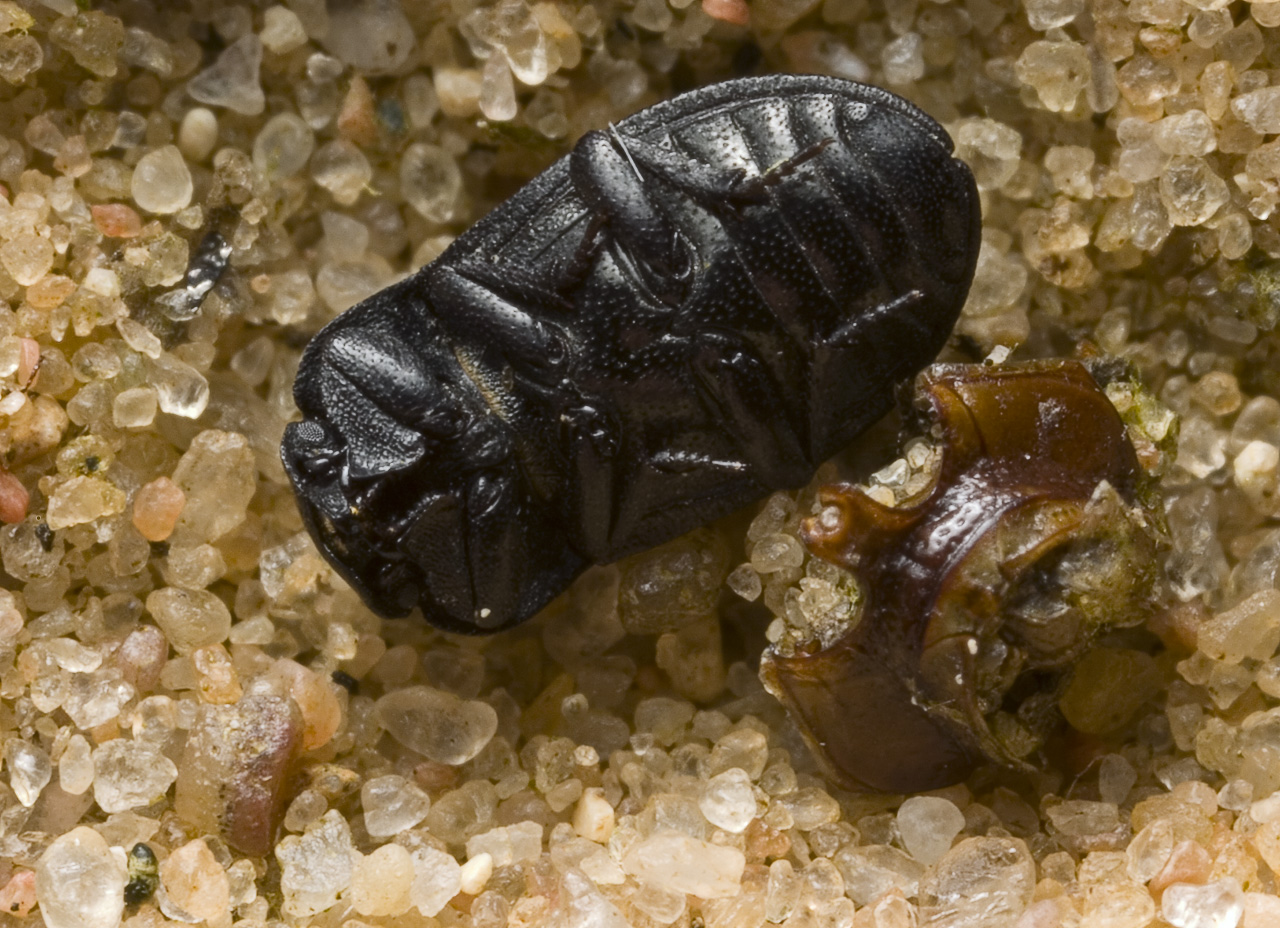
Melanimon tibialis · šlaitinis juodvabalis
underside, ventral side - pilvas
- Melanimon tibiale
- Lille klitskyggebille
- käpäspimikkä
- šlaitinis juodvabalis
- mrzygłodek czarnuch
This is a locally common species of lowland sandy soils throughout Europe north to Fennoscandia and the UK, extending east into central Siberia and south to northwest Africa, it is generally rare in northern regions e.g. there is only a single population in Norway, and is sensitive to habitat alteration, especially in coastal areas where human impact is severe. The typical habitats are dunes, dune slacks and sand pits, on suitable soil along dry margins of coniferous or mixed woodland or in conifer plantations, where the adults occur near the surface of the soil or sand at the base of tussocks or among leaf-litter or pine needles; they are nocturnal and by day spend much of their time concealed, at this time they are easily found by sieving dry substrate but in hot weather they are active on the surface and may swarm in large numbers. Adults are active from early in the year and mating occurs in the spring, eggs are laid among roots and stems in the soil where the larvae develop feeding on plant detritus or gnawing at roots, in some areas they occasionally appear in large numbers feeding at ground level on the roots and stems of various herbaceous plants and shrubs and will feed eagerly on larch seedlings, pupation occurs from August and new-generation may become active for a while before overwintering in the soil among tussocks etc. The generations generally overlap so that adults are present year-round.
3-4mm. A small shiny black and glabrous species immediately recognized among our fauna by the form of the front tibia, and the habitat should be a good clue to the beetle’s presence. Head widely transverse, broadly rounded and emarginate anteriorly and expanded laterally; covering the base of the antennae and almost dividing the eyes, surface densely microsculptured in places and finely punctured. Antennae short and gradually broadened to a round terminal segment. Pronotum transverse and broadest in front of the middle, smoothly rounded from weakly protruding anterior angles to a sinuate margin before slightly obtuse hind angles, basal margin widely sinuate. Surface strongly and densely punctured but for various smooth areas on the disc and with a distinct impression either side at the base. Elytra elongate and smoothly rounded from perpendicular shoulders to a continuously curved apex, surface randomly and moderately strongly punctured, usually with random and rather strong impressions on the disc. Legs short and robust, the femora only narrowly visible from above. Middle and hind tibiae weakly expanded to truncate apical margins, externally with several rows of short and stiff spines, each with two strong spurs on the inner apical angle, Front tibiae with several small teeth in the basal half, greatly expanded into a broad external tooth at the apex; at the widest part as long as the tarsi, inner apical angle with 2 short teeth. Tarsi 5-5-4, basal segments short and simple, terminal segment long and only weakly expanded, claws small, smooth and only weakly curved.
Kūnas 3 – 4 mm juodas, kiek žvilgantis, viršutinė pusė tankiai ir rupiai taškuota. Priešnugarėlė tokio pat pločio kaip antsparniai. Antsparniai su neryškiai vingiuotais išilginiais iškilimais ir stambiomis skersinėmis raukšlėmis. Antenos trumpos, nesiekiančios priešnugarėlės vidurio, su trinare buožele. Akys perskirtos į dvi dalis. Aptinkamas sausose smėlėtose dirvose, po akmenimis, tarp augalų. Lietuvoje neretas.
‥
0 comments
Add a comment